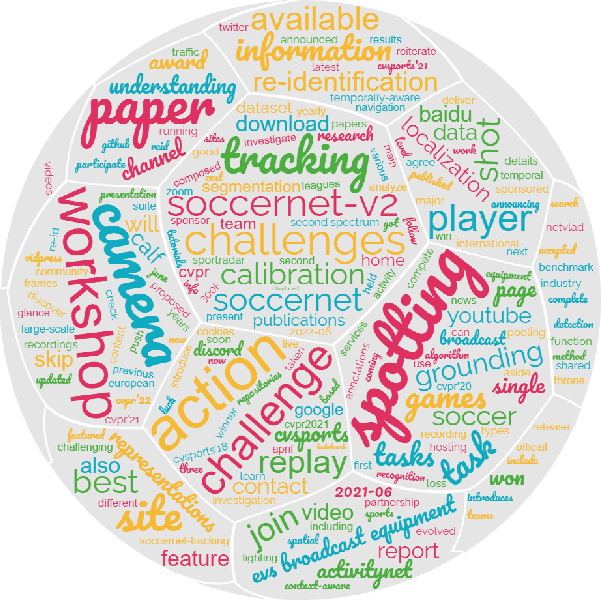Leqi Shen
LLaVA-MLB: Mitigating and Leveraging Attention Bias for Training-Free Video LLMs
Mar 14, 2025Abstract:Training-free video large language models (LLMs) leverage pretrained Image LLMs to process video content without the need for further training. A key challenge in such approaches is the difficulty of retaining essential visual and temporal information, constrained by the token limits in Image LLMs. To address this, we propose a two-stage method for selecting query-relevant tokens based on the LLM attention scores: compressing the video sequence and then expanding the sequence. However, during the compression stage, Image LLMs often exhibit a positional attention bias in video sequences, where attention is overly concentrated on later frames, causing early-frame information to be underutilized. To alleviate this attention bias during sequence compression, we propose Gridded Attention Pooling for preserving spatiotemporal structure. Additionally, we introduce Visual Summarization Tail to effectively utilize this bias, facilitating overall video understanding during sequence expansion. In this way, our method effectively Mitigates and Leverages attention Bias (LLaVA-MLB), enabling the frozen Image LLM for detailed video understanding. Experiments on several benchmarks demonstrate that our approach outperforms state-of-the-art methods, achieving superior performance in both efficiency and accuracy. Our code will be released.
FastVID: Dynamic Density Pruning for Fast Video Large Language Models
Mar 14, 2025Abstract:Video Large Language Models have shown impressive capabilities in video comprehension, yet their practical deployment is hindered by substantial inference costs caused by redundant video tokens. Existing pruning techniques fail to fully exploit the spatiotemporal redundancy inherent in video data. To bridge this gap, we perform a systematic analysis of video redundancy from two perspectives: temporal context and visual context. Leveraging this insight, we propose Dynamic Density Pruning for Fast Video LLMs termed FastVID. Specifically, FastVID dynamically partitions videos into temporally ordered segments to preserve temporal structure and applies a density-based token pruning strategy to maintain essential visual information. Our method significantly reduces computational overhead while maintaining temporal and visual integrity. Extensive evaluations show that FastVID achieves state-of-the-art performance across various short- and long-video benchmarks on leading Video LLMs, including LLaVA-OneVision and LLaVA-Video. Notably, FastVID effectively prunes 90% of video tokens while retaining 98.0% of LLaVA-OneVision's original performance. The code is available at https://github.com/LunarShen/FastVID.
TempMe: Video Temporal Token Merging for Efficient Text-Video Retrieval
Sep 02, 2024Abstract:Most text-video retrieval methods utilize the text-image pre-trained CLIP as a backbone, incorporating complex modules that result in high computational overhead. As a result, many studies focus on efficient fine-tuning. The primary challenge in efficient adaption arises from the inherent differences between image and video modalities. Each sampled video frame must be processed by the image encoder independently, which increases complexity and complicates practical deployment. Although existing efficient methods fine-tune with small trainable parameters, they still incur high inference costs due to the large token number. In this work, we argue that temporal redundancy significantly contributes to the model's high complexity due to the repeated information in consecutive frames. Existing token compression methods for image models fail to solve the unique challenges, as they overlook temporal redundancy across frames. To tackle these problems, we propose Temporal Token Merging (TempMe) to reduce temporal redundancy. Specifically, we introduce a progressive multi-granularity framework. By gradually combining neighboring clips, we merge temporal tokens across different frames and learn video-level features, leading to lower complexity and better performance. Extensive experiments validate the superiority of our TempMe. Compared to previous efficient text-video retrieval methods, TempMe significantly reduces output tokens by 95% and GFLOPs by 51%, while achieving a 1.8X speedup and a 4.4% R-Sum improvement. Additionally, TempMe exhibits robust generalization capabilities by integrating effectively with both efficient and full fine-tuning methods. With full fine-tuning, TempMe achieves a significant 7.9% R-Sum improvement, trains 1.57X faster, and utilizes 75.2% GPU memory usage. Our code will be released.
X-ReID: Cross-Instance Transformer for Identity-Level Person Re-Identification
Feb 04, 2023Abstract:Currently, most existing person re-identification methods use Instance-Level features, which are extracted only from a single image. However, these Instance-Level features can easily ignore the discriminative information due to the appearance of each identity varies greatly in different images. Thus, it is necessary to exploit Identity-Level features, which can be shared across different images of each identity. In this paper, we propose to promote Instance-Level features to Identity-Level features by employing cross-attention to incorporate information from one image to another of the same identity, thus more unified and discriminative pedestrian information can be obtained. We propose a novel training framework named X-ReID. Specifically, a Cross Intra-Identity Instances module (IntraX) fuses different intra-identity instances to transfer Identity-Level knowledge and make Instance-Level features more compact. A Cross Inter-Identity Instances module (InterX) involves hard positive and hard negative instances to improve the attention response to the same identity instead of different identity, which minimizes intra-identity variation and maximizes inter-identity variation. Extensive experiments on benchmark datasets show the superiority of our method over existing works. Particularly, on the challenging MSMT17, our proposed method gains 1.1% mAP improvements when compared to the second place.
SoccerNet 2022 Challenges Results
Oct 05, 2022



Abstract:The SoccerNet 2022 challenges were the second annual video understanding challenges organized by the SoccerNet team. In 2022, the challenges were composed of 6 vision-based tasks: (1) action spotting, focusing on retrieving action timestamps in long untrimmed videos, (2) replay grounding, focusing on retrieving the live moment of an action shown in a replay, (3) pitch localization, focusing on detecting line and goal part elements, (4) camera calibration, dedicated to retrieving the intrinsic and extrinsic camera parameters, (5) player re-identification, focusing on retrieving the same players across multiple views, and (6) multiple object tracking, focusing on tracking players and the ball through unedited video streams. Compared to last year's challenges, tasks (1-2) had their evaluation metrics redefined to consider tighter temporal accuracies, and tasks (3-6) were novel, including their underlying data and annotations. More information on the tasks, challenges and leaderboards are available on https://www.soccer-net.org. Baselines and development kits are available on https://github.com/SoccerNet.
 Add to Chrome
Add to Chrome Add to Firefox
Add to Firefox Add to Edge
Add to Edge